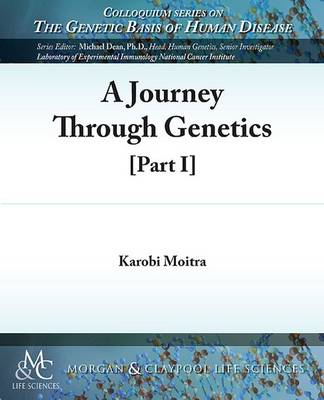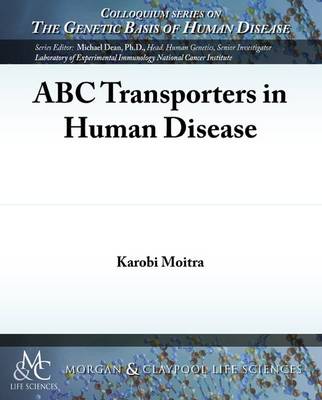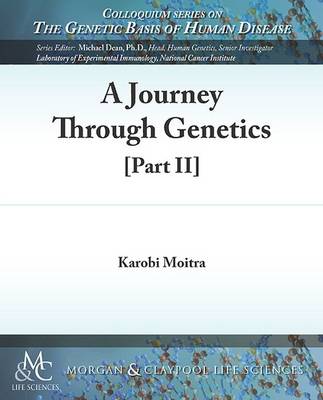Colloquium Series on The Genetic Basis of Human Disease
4 total works
Scientists are deciphering the biology of the tumor cell at a level of detail that would have been hard to imagine just a decade or so ago. The development of high-throughput DNA sequencing and genomics technologies have allowed an understanding of the development, growth, survival, and spread of cancer cells in the body. From this information, we now have a basic blueprint or roadmap of how a single damaged cell can develop into a pre-malignant lesion, a primary tumor, and finally, a lethal tumor that may spread throughout the body and resist both medical therapy and host immune responses. In this book, we provide an overview of our current understanding of this cancer blueprint, which has been aided both by the study of familial cancer syndromes, in vitro studies of cancer cells, and animal models. Three classes of genes have emerged from these studies: tumor suppressor genes needed for normal growth control and DNA repair; oncogenes that regulate cell growth and survival, and epigenetic modifiers, enzymes that regulate the modification of DNA and the proteins that form chromatin. Each of these three classes of genes is mutated or altered at least once in virtually all malignant cancer cells. Current technologies permit the DNA sequencing of cancer exomes (coding gene sequencing), whole genomes, transcriptome (all expressed genes), and DNA methylation profiling. These studies show that all tumors have unique constellations of mutated, rearranged, amplified, and deleted genes. Single-cell sequencing further shows that there is extensive variation in individual cells in the tumor; that cancers evolve, and have many of the properties of a multi-cellular entity. Lastly, cancer cells, through mutations in epigenetic modifiers, can reprogram the genome and unlock entire developmental and gene expression pathways to adapt and survive in changing conditions. This reprogramming allows the tumor to elude the host body's defenses, radiotherapy, chemotherapy, and targeted therapy that we use in cancer treatment. Understanding this cancer blueprint paves the way for the development of future therapies to treat and eliminate cancer.
A Journey Through Genetics is designed to take the reader on an incredible journey to explore the exciting discoveries in genetics and molecular biology. In Part I, the reader will embark on a genetic odyssey starting with the "Father of Genetics," Gregor Mendel, leading on to the amazing story of photo 51 and the discovery of the structure of the DNA double helix, and culminating with the invention of one of the most powerful tools in molecular biology: the polymerase chain reaction. The reader will discover the stories behind the science of genetics while going behind the scenes to take a glimpse into the lives of pioneering scientists and will ultimately come to understand that people are just as important as the science they undertake to do. In short, scientists are human too! This book is targeted toward undergraduate non-majors and also as a "companion" to a standard genetics textbook for Biology majors. The book will also be useful for anyone that wants to understand the stories behind the science of genetics.
The ATP-binding cassette (ABC) transporter genes are ubiquitous in the genomes of all vertebrates so far studied. The human ABC transporter superfamily contains 48 genes, subdivided into 7 subfamilies ranging from A to G (based on sequence homology of their nucleotide binding domains). The ABC proteins encoded by these genes are ATP-driven transmembrane pumps, some of which possess the capacity to efflux harmful toxic substances and therefore play a key role in xenobiotic defense. ABC proteins have been evolutionarily conserved from bacteria to humans and multiple gene duplication and deletion events in the ABC genes indicate that the process of gene evolution is still ongoing. Polymorphisms and variations in these genes are linked to variations in expression, function, drug disposition, and drug response. Single nucleotide polymorphisms (SNPs) in these genes could be markers of individual risk for adverse drug reactions or susceptibility to complex diseases. The pharmacogenetics of this unique family of transporters is still under study; however, in the context of human health, it is a well-known fact that variations in these transporters are the underlying cause for several human diseases including cystic fibrosis, Pseudoxanthoma elasticum (PXE), and X-linked adenoleukodystrophy (X-ALD).
A Journey Through Genetics Part II is designed to continue on the incredible journey initiated in Part I to explore the exciting discoveries in genetics and molecular biology. In Part I, the reader embarked on a genetic odyssey that started with the “Father of Genetics,” Gregor Mendel, and culminated in the invention of one of the most powerful tools in molecular biology—the polymerase chain reaction. The second part of the book will take the reader on a journey to explore the frontiers of genetic diversity, gene cloning, the human journey, and the human genome project! The book is targeted toward undergraduate non-majors and also as a “companion” to a standard genetics textbook for biology majors. The book will also prove to be useful for anyone that wants to understand the stories behind the science of genetics.



